Found 11 Results
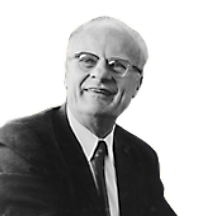
Bethe Hans
Hans Bethe was born in 1906 in Strasbourg, Germany. In 1928, he received his doctorate from the University of Munich, and was later appointed assistant professor at the University of Tübingen. When the Nazis came to power in 1933, he lost his job and emigrated, first to England and then to the United States, where he worked as a professor of nuclear physics at Cornell University.
In 1967, Hans Bethe was awarded the Nobel Prize in Physics “for his contributions to the theory of nuclear reactions, and especially his discoveries concerning the energy production in stars”.
Bethe proposed a solution to a problem that had long troubled many astronomers: How is energy formed in the sun and stars? He suggested that there is a six stage process of nuclear fusion of various atoms in which enormous energy is emitted.
The products of this process are contradictory. On the one hand, there is solar light with the pleasant heat that is the source of our life. But on the other hand, we have the means to destroy us all – the hydrogen bomb which is based on the identical principle of fusion. Bethe actually worked on the development of the hydrogen bomb. However, after World War II, he became one of the most enthusiastic supporters of nuclear weapons control and fought against American armament plans.
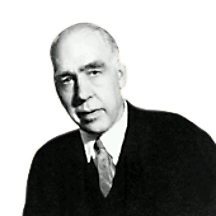
Bohr Niels
Niels Bohr was born in Copenhagen. His father, Christian Bohr, was a professor of physiology. His mother, Ellen Adler, was the daughter of a prominent Jewish family in Denmark. Bohr distinguished himself at the outset of his career and in 1907 he was awarded a gold medal by the Danish Royal Academy of Science for his Bachelor of Arts project.
Upon receiving his doctorate degree, Bohr went to England to study at Cambridge with J.J. Thomson, the discoverer of the electron. However, he became interested in the research of Ernest Rutherford on the structure of the atom and went to Manchester to work with him.
In 1913, he published his own model of the atom, a revolutionary theory that served as a cornerstone for twentieth century physics and earned him the Nobel Prize.
In 1916, he was appointed professor at the University of Copenhagen, and in 1920, he established the Institute of Theoretical Physics and was its director until his death.
Niels Bohr was likable and well rounded; in addition to his scientific work, he devoted his time to sport and even played on a football team.
In 1943, during the German occupation of Denmark, he fled to Sweden, from there to England and, later, to the U.S. where he participated in “the Manhattan Project” for the development and production of the atomic bomb. After the war, he did his utmost to prevent the proliferation of atomic weapons.
Niels Bohr died of a stroke on November 18, 1962, in Copenhagen, the city of his birth.
Niels Bohr was awarded the 1922 Nobel Prize in Physics, “for his contribution in research into the structure of the atom and the radiation it emits. His most outstanding achievement was the model of the structure of the atom that he published in 1913. This model integrated the quantum theory, still in its infancy, with atomic physics and provided answers to key questions puzzling physicists of that period.
Upon discovering that the atom has a positively charged nucleus and negatively charged electrons, physicists theorized that electrons circle about the nucleus like planets about the sun. According to the laws of classical physics, they would then lose energy and enter a spiral course which would consequently cause them to collapse into the nucleus. However, electrons are never found in the vicinity of the nucleus.
Furthermore, an examination of radiation released by atoms, particularly the hydrogen atom, reveals that this radiation is not emitted at all frequencies. Classical physics cannot explain the existence of “allowed” frequencies and “forbidden” ones.
To resolve this contradiction, Bohr proposed a solution deviating from classical physics: he determined that electrons circle about the nucleus only in certain circular “allowed” orbits, each one characterized by a particular value of energy. Electron do not give off energy while they are orbiting around the nucleus. When they pass from an orbit of higher energy to one of lower energy, However, they emit the difference in energy in the form of radiation. The radiation is thus released in units of energy corresponding to the differences in energy of the various orbits and is limited only to these units.
Bohr explained that radiation frequencies must correspond to the units of energy emitted from the electron. This idea corresponds to the theory that radiation is emitted in individual units of energy called “quanta”.
The Bohr model led to the development of quantum mechanics, one of the major scientific achievement of modern physics which explain a lot of phenomenons.
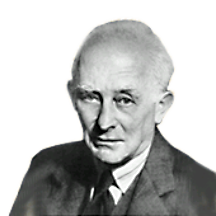
Born Max
Max Born was born in 1882 in Germany. With the rise of the Nazis he immigrated to England.
Born received the 1954 Nobel prize in physics “for his fundamental research in quantum mechanics, especially for his statistical interpretation of the wave function.”
Max Born passed away in 1970.
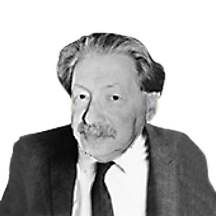
Chain Ernst
Chain was born in Berlin in 1906. In his youth, he aspired to become a pianist, but focused on the studies of chemistry and obtained his PH.D. degree at the age of 21. When the Nazi regime came to power, he emigrated to England, at first to Cambridge University and later on to Oxford University. There he joined Howard Florey’s department, where he engaged in the research of the chemical structure of penicillin.
In 1945, Ernst Chain, Howard Florey and Alexander Fleming, who was considered the first to discover penicillin, were awarded the Nobel Prize in Physiology or Medicine “for the discovery of penicillin and its curative effect on various infectious diseases”.
Following biological tests made on penicillin, it was discovered that it effect a large variety of microbes without damaging the organism itself. It was further discovered that this substance is ten times more powerful in destroying microbes than sulfur drugs, which had been used until that time.
In 1941, following the success of experiments conducted on animals, and after Chain successfully improved the purification process of the substance, bringing it to a much higher purity grade, experiments on human beings began.
Chain and his colleagues made a crucial contribution to humanity in its struggle against infectious diseases. Their triumph can be measured by the saving of millions of lives.
Ernst Chain died in 1979.
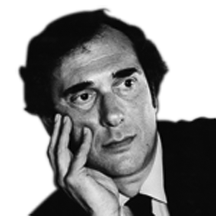
Harold Pinter
Harold Pinter’s ancestors came to England from eastern Europe, possibly descendants of the Portuguese Pinto family. He was born in East London in 1930 and was very talented as a child. He was a gifted runner, a promising cricket player and a curious student who admired English and Russian literature.
In 1948 he joined the theater academy of London and played in hundreds of plays. At that period he also directed and played in radio and television programs. However he was best known for his play writing, producing witty dialogues, absurd plots and unique style, in plays such as The Birthday Party, The Room and Betrayal – plays that left the audience speechless. In 2005 his outstanding talent was recognized and he was awarded the literature Nobel Prize, joining the Jewish literary hall of fame.

Josephson Brian
Brian Josephson was born in Wales in 1940. He studied physics in the Trinity College, concentrating in Super-Conductivity.
In 1973 Josephson received the Nobel prize in physics, “for his theoretical predictions of the properties of a super current through a tunnel barrier, in particular, those phenomena which are generally known as the Josephson effects.”
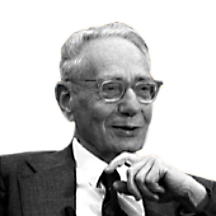
Katz Bernard
Bernard Katz was born in Leipzig, Germany in 1911.
He received the 1970 Nobel prize in physiology or medicine, together with Julius Axelrod, for their discoveries concerning the neuro-transmitter’s function in transmitting nerve signals to muscle cells.
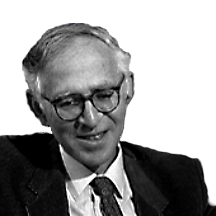
Klug Aaron
Aaron Klug was born in 1926 in Lithuania; he studied in South Africa for his B.Sc and M.Sc. degrees. He received his Ph.D. in chemistry from Cambridge University in England, and in 1954 began working at Birckback College in London. From 1962, he began directing the MRC Laboratory of Molecular Biology.
In 1982, Aaron Klug was awarded the Nobel Prize in Chemistry “for his development of crystallographic electron microscopy and his structural elucidation of biologically important nuclei acid-protein complexes”.
Klug developed a method for deciphering the spacial structure of macromolecules by means of photographs taken with an electronic microscope. He also provided a theoretical basis for the reliability of his method.
In his research, Klug attempted to understand the connection between the organizing rules of macromolecules and their capability to perform various biological functions. In that, he laid the foundation for a fruitful research assisting in the comprehension of the macromolecule in fields such as viruses, the deciphering of the spacial structure of RNA-transfer and the structure of chromosomes bearing genetic information.
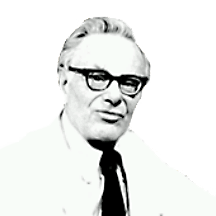
Krebs Hans
Hans Krebs was born in Hildesheim, Germany in 1900. In 1925 he received his Ph.D. in medicine at Hamburg and engaged in research at the Imperial Institute of Biology in Berlin and Freiburg. When the Nazis came to power, he left for England, to Cambridge University. In 1935 he moved to Sheffield University, where he studied the breathing mechanism in the cell, and from 1954 he worked at Oxford University.
In 1953 Hans Krebs won the Nobel prize in physiology or medicine together with Fritz Lippman for the discovery of the citric acid cycle in the cell, which has since been named after him – the Krebs Cycle.
The deciphering of the citric acid cycle enabled biochemists to understand an important part of the mechanism by which the cell turns food into energy. The discoveries of Hans Krebs, who passed away in 1981, are the cornerstones of modern Biochemistry.
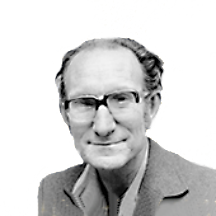
Milstein Cesar
Cesar Milstein was born in 1927 in Argentina. He studied at Cambridge University in Great Britain, where he received his doctorate in 1960. Milstein was awarded the 1984 Nobel prize in physiology or medicine, “For the discovery of the principle for production of monoclonal antibodies.
The antibodies are produced by lymphocytes, cells of the immune system, and are used in medicine for the diagnosis and treatment of diseases. However, the production of a specific antibody from serum is impossible, because the serum contains a mixture of different types of antibodies. Furthermore, lymphocytes could not be grown in tissue culture.
Milstein genetically fused lymphocytes with myeloma cancerous cells, that can reproduce continuously in culture. The hybrid cell could now be isolated and multiplied, producing the specific antibody in the desired quantities.
Cesar Milstein’s discoveries enabled medicine to deal more efficiently with various diseases, including cancer.
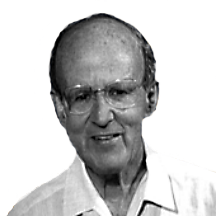
Perutz Max
Max Perutz was born in Vienna, Austria, in 1914.
He received the 1962 Nobel prize in chemistry together with John Kendrew, “For their studies of the structures of globular proteins”, Hemoglobin and Myoglobin.

free text
Select a Nobel category:
- Chemistry
- Economics
- Literature
- Medicine
- Peace
- Physics
Select first letter of winner's name:
- A
- B
- C
- D
- E
- F
- G
- H
- I
- J
- K
- L
- M
- N
- O
- P
- Q
- R
- S
- T
- U
- V
- W
- X
- Y
- Z
Search Results
Found 0 Results
No search results

region on map
